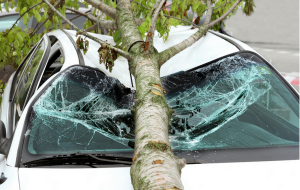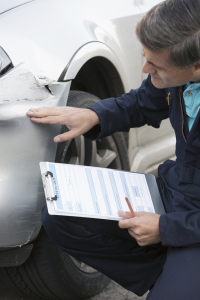 The great debate in auto insurance; should you purchase comprehensive coverage and/or collision coverage? Collision insurance sounds simple – it’s insurance for collisions. Collision coverage provides coverage for the loss resulting from the striking of another object by a moving vehicle. But what about comprehensive coverage? [READ MORE]
The great debate in auto insurance; should you purchase comprehensive coverage and/or collision coverage? Collision insurance sounds simple – it’s insurance for collisions. Collision coverage provides coverage for the loss resulting from the striking of another object by a moving vehicle. But what about comprehensive coverage? [READ MORE]
Category Archives: Auto Insurance
3 Primary Reasons for Increasing Auto Rates
 As 2017 draws to a close, let’s reflect on some insurance-related items in the industry. While storms and hurricanes certainly dominated the headlines for a while, one issue that has been consistent throughout the year is an increase in auto insurance rates. If you’ve seen a rate increase this year and have wondered why (especially if you have a clean driving record), this blog post is for you.
As 2017 draws to a close, let’s reflect on some insurance-related items in the industry. While storms and hurricanes certainly dominated the headlines for a while, one issue that has been consistent throughout the year is an increase in auto insurance rates. If you’ve seen a rate increase this year and have wondered why (especially if you have a clean driving record), this blog post is for you.
Why are rates going up? There are three primary reasons.
Smart Tips for Parents of Teen Drivers
 Adding a young driver to an auto insurance policy can cause sticker shock for a parent. According to InsuranceQuotes.com, a rate comparison site, adding a single teenager to a policy caused annual premiums to increase an average of 78%, or $671. The good news is that teen driver rates have been decreasing since 2013 when the average increase was 85%! [Read More]
Adding a young driver to an auto insurance policy can cause sticker shock for a parent. According to InsuranceQuotes.com, a rate comparison site, adding a single teenager to a policy caused annual premiums to increase an average of 78%, or $671. The good news is that teen driver rates have been decreasing since 2013 when the average increase was 85%! [Read More]
The Benefits of Working with an Independent Agent
 Having worked in the insurance industry for ten years, I have received many calls, e-mails, and texts from friends and family regarding their insurance needs. I am more than happy to assist where I can, but my conversations with them seem to always end with one question, “Do you have an independent agent?” Like many not in the insurance industry, insurance can be an unknown. It’s something that you know you need to have, but don’t fully understand how it works. It’s an intangible product that you pay for every year and hope to never use. Here are three reasons I believe working with an independent agent is the best option for purchasing insurance. {Read More…}
Having worked in the insurance industry for ten years, I have received many calls, e-mails, and texts from friends and family regarding their insurance needs. I am more than happy to assist where I can, but my conversations with them seem to always end with one question, “Do you have an independent agent?” Like many not in the insurance industry, insurance can be an unknown. It’s something that you know you need to have, but don’t fully understand how it works. It’s an intangible product that you pay for every year and hope to never use. Here are three reasons I believe working with an independent agent is the best option for purchasing insurance. {Read More…}
What’s Driving My Personal Auto Insurance Rates?
 If you drive a vehicle, you are required by law to have insurance. But why do we need it?
If you drive a vehicle, you are required by law to have insurance. But why do we need it?
Consider hitting a car and injuring three passengers. If both your vehicle and the other vehicle are valued at $20,000 and considered total losses, and each passenger has medical claims of $20,000, this quickly adds up to $100,000! That’s an amount I don’t even want to think about having to plan for in my annual budget! Fortunately, there’s insurance! {Read More…}
May We Have Your Attention Please?
 When driving home from work this week, I came face to face with a distracted driver. The driver was looking down, eyes off the road, texting!
When driving home from work this week, I came face to face with a distracted driver. The driver was looking down, eyes off the road, texting!
Recent studies have shown drivers are more distracted, which accounted for 3,179 deaths and 431,000 injuries in 2014. It is even estimated that 1 in 4 car crashes involved cell phone use. Take a look at a recent survey that was posted in USA Today. {Read More…}
The Hidden Costs of Cheap Insurance – What Are You Getting for Your Money?
 It’s next to impossible to watch any type of TV programming without seeing a commercial advertising how you can save money on your insurance. So should you really purchase your insurance policy based upon the cheapest price?
It’s next to impossible to watch any type of TV programming without seeing a commercial advertising how you can save money on your insurance. So should you really purchase your insurance policy based upon the cheapest price?
Before I elaborate on this, allow me to ask you a different set of questions:
- – Would you hire an attorney based solely upon who has the cheapest hourly rates?
- – Would you hire a financial planner or investment advisor based solely upon their fees?
If you’re like most people, you probably answered these questions with a resounding “no.” Then why should making a decision on your insurance policy be any different? {Read More}
Two Important Tips for Handling a Total Loss Vehicle Claim
 “Your vehicle is a total loss.” These are words you probably never want to hear from your insurance company. But what does “total loss” really mean?
“Your vehicle is a total loss.” These are words you probably never want to hear from your insurance company. But what does “total loss” really mean?
What You Need to Know About Your Auto Liability Insurance

Insurance Policy with Pen
If you drive a car, you likely have auto insurance. Your insurance policy provides coverage against the many exposures of owning a vehicle. One of the most important perils it covers is your liability associated with operating a vehicle.
Why Is My Auto Damage Estimate Not What I Anticipated?
 Have you ever wondered what the body shop technician is looking at when they are writing up an estimate for damages to your vehicle? You may expect the estimate to come back at “this number” but are shocked to see it is actually “that number.” Why is it so different from what you thought? Let me try to shed some light on how damages are estimated.
Have you ever wondered what the body shop technician is looking at when they are writing up an estimate for damages to your vehicle? You may expect the estimate to come back at “this number” but are shocked to see it is actually “that number.” Why is it so different from what you thought? Let me try to shed some light on how damages are estimated.
First, one must understand that there are several different parts available to repair an auto. There are original manufactured parts (OEM) from the dealer, remanufactured parts that are sent back to the dealer to be remanufactured and put back out on the market, and aftermarket parts which are created from a generic mold by aftermarket companies. OEM parts are usually the most expensive while aftermarket parts are usually the least expensive.
A shop will look at the damaged part and the surrounding parts to see if they are also damaged. Let’s say you have damage to your driver side front door. A shop will look at the door and see if the damage can be repaired or if the door needs to be replaced. They will also look to see if the front driver side fender has damage since it is an adjacent part. Same with the driver side rear door. They will inspect the side mirror, moldings on the door, and also check to see if only the outer shell needs to be replaced or the entire door.
Remove and install (R&I) time is a major part of a repair estimate and is taken into account on every estimate. Many of the parts that are damaged are not readily accessible to remove. A body shop has to remove other parts that surround the damaged part in order to repair or replace that damaged part. These R&I times are generally not very long, anywhere from 20-40 minutes for each part, but if the damage is severe enough, it may require many parts to be removed and all the R&I time is accounted for on the estimate based off the labor rate the shop charges. This can add up quickly.
Paint supplies and paint labor may also be listed on the estimate. Paint supplies can range anywhere from $150 for a small job to $1,500 for a larger one. Paint labor covers the time it will take to paint the repaired parts of the vehicle, including any blending that’s necessary for the paint to match.
If you have had repair work done on your vehicle, you may have paid more than what was originally estimated. That is because when a shop writes an estimate, they are only estimating the damage they can visibly see. Once they begin repairs and teardown the vehicle, they often find hidden damage. This is called a supplement and it can include additional damages found, more time needed to repair these damages, or price differences found when the parts are actually ordered.
As you can see, there is much more to a repair estimate than what you might think. There are many things to look at and it can often be overwhelming. If you are worried about a particular estimate you receive from a shop, there is a guidebook called the Mitchell Guide that documents what OEM parts cost and how long repairs should take for the majority of cars. It is a useful tool to compare your estimate to the industry guidelines.
Source with permission to repost: https://blog.central-insurance.com/2016/06/23/why-is-my-auto-damage-estimate-not-what-i-anticipated/
